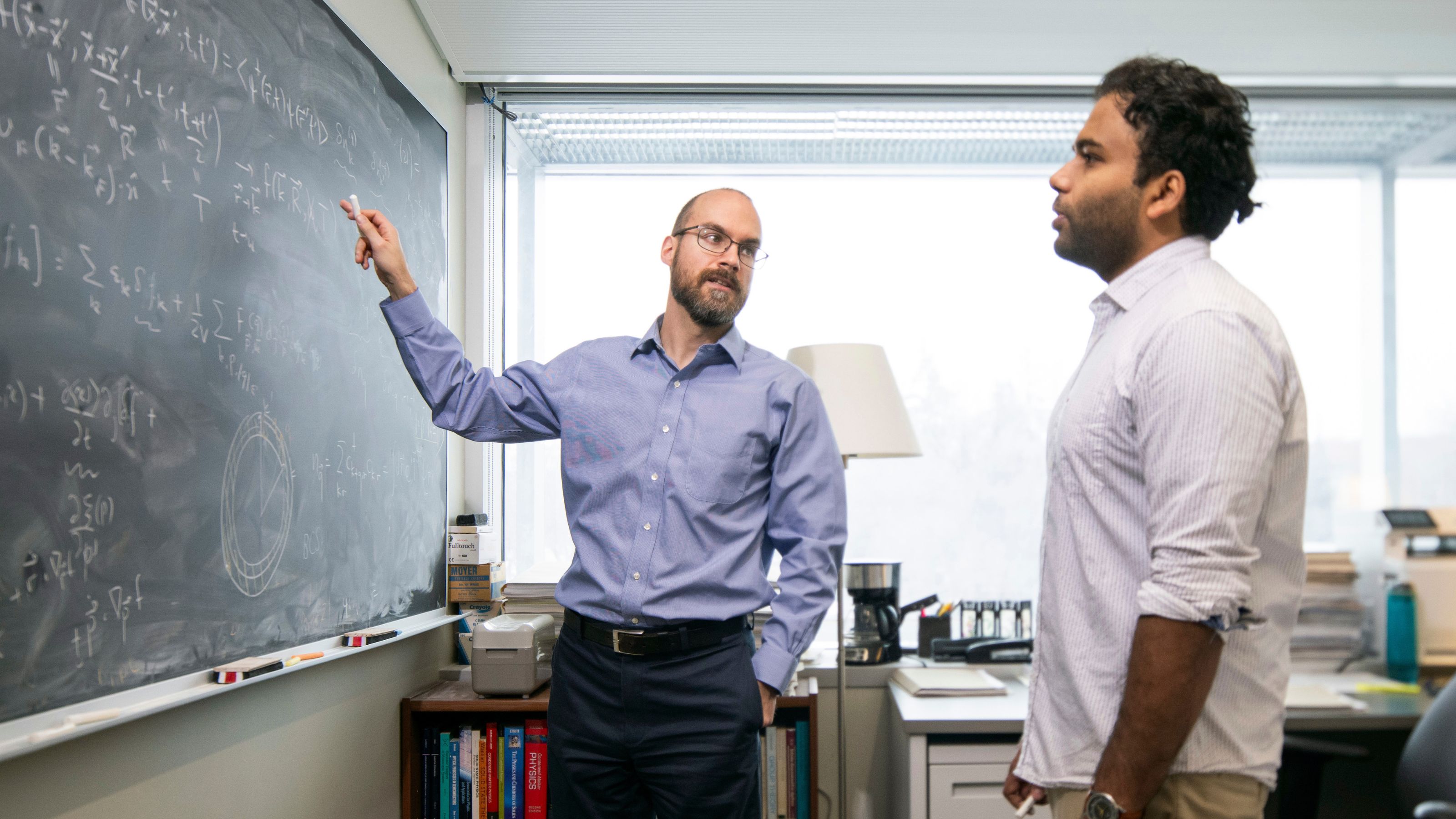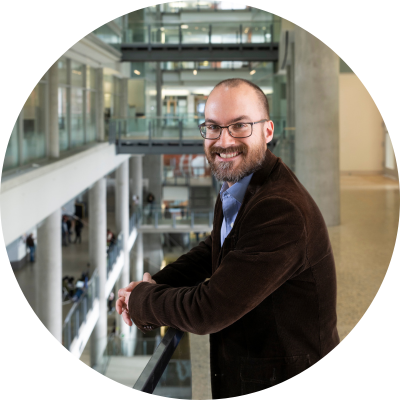In this week’s Innovator Spotlight, hear from Joseph Maciejko, associate professor in the Department of Physics and Tier-II Canada Research Chair in Condensed Matter Theory. As interim director of the Edmonton node of Quantum Horizons Alberta, Joseph is helping build a world-class team of researchers in theoretical quantum physics and related areas.
How do you describe your work to people who don’t work in your field?
I study something called quantum materials. Materials like iron, copper or silicon are made up of huge numbers of extremely small particles such as electrons. How those particles interact with each other and what their “collective behaviour” might be control to a large extent the technologically useful properties of the material—like how well it conducts electricity. In quantum materials, the collective behaviour of electrons is controlled by quantum mechanics and this can give rise to surprising effects like magnetism and superconductivity. As a theoretical physicist, I employ mathematical models and theories to try to understand this behaviour and predict new materials that might have novel useful properties.
What’s one big problem you want to solve through your work?
First an analogy. Think of electrons as Lego bricks, and of quantum mechanics as the rules specifying how two bricks can snap together. An interesting quantum material is a beautiful “Lego creation” with so many bricks arranged in such creative ways that it doesn’t look like Lego at all. I want to understand mathematically or “classify” the range of all possible collective behaviours that the building blocks of nature and the laws of quantum mechanics allow. For example, what is there beyond magnetism and superconductivity?
What does the word “innovation” mean to you?
Innovation to me means thinking something deep that hasn’t been thought of before. It could be establishing an unexpected connection between two areas of science. Or it could be revisiting an old problem and discovering a hidden gem that has been overlooked and perhaps it turns a whole field of research around.
What’s been your biggest a-ha moment — in life or work — so far?
In recent years, this would be the initial idea that led to the inception of hyperbolic band theory, which I consider to be a radically new direction in my research area of condensed matter physics. The idea was to recognize that concepts from pure mathematics—like number theory and algebraic geometry, which traditionally have had limited application to physics—could help understand a fundamentally new type of quantum material, called a hyperbolic lattice, that had been recently synthesized in a lab at Princeton University. I enjoy when ideas from completely unrelated areas of science and mathematics must somehow “team up” to explain a physical phenomenon. It testifies to the unity of all human knowledge.
How do you or your team come up with your best ideas?
My best ideas have typically come out in either casual, unstructured conversations with students, postdocs or colleagues while scribbling equations on a chalkboard (yes, with real chalk!); or by reading and “physics daydreaming” in a quiet space such as my office… or my car in a traffic jam. Also, lots of coffee!
What’s your favourite thing about working at the U of A?
The U of A is a wonderful place to work because of all the wonderful people here. The culture in the Department of Physics is highly collegial and collaborative. I’ve been fortunate to work with many dedicated students and postdocs and have received lots of great support from my colleagues as well.
Do you have a role model at the U of A? How have they influenced you?
Over the years, I’ve benefited greatly from the support and mentorship of many senior colleagues in the Department of Physics, such as Drs. John Beamish, Mark Freeman, Frank Marsiglio, Roger Moore and Mauricio Sacchi. Those individuals have been incredibly generous with their time and advice and I am extremely grateful and indebted to them. Renowned theoretical physicists in our department like Drs. Valeri Frolov and Don Page are also a great source of inspiration.
In Shape: The University Strategic Plan 2023-2033, the University of Alberta commits to having a positive impact on our students and staff, our communities, and the communities we serve here in Alberta and around the world. What are the impacts of your work?
It is sometimes hard to quantify the immediate impact of purely theoretical research like the work that I do. In theoretical physics, we take a long view of a word like “impact." When Einstein was developing the theory of relativity in the early 20th century, no one—including himself—could have foreseen that it would become a crucial part of how the global positioning system (GPS) works. Without the theoretical physicists who laid the foundation of quantum mechanics in the 1920s, there would be no computer chips, lasers or medical resonance imaging (MRI) machines. I believe that continually striving to understand how nature works at the most fundamental level always pays off in the long run. It enriches our collective intelligence and creates the conditions for lasting technological breakthroughs.
What’s next for you? Do you have any new projects on the horizon?
I have lots of research projects on the go with my U of A team members and external collaborators, most immediately to further understand the full breadth of possible collective behaviours in hyperbolic lattices. More broadly, I am excited by the possibilities that will be opened up by Quantum Horizons Alberta (QHA), a new $25M pan-Alberta initiative to support fundamental research in quantum science. In my capacity as interim director for the U of A portion of this initiative, I look forward to helping build a world-class team of researchers in theoretical quantum physics and related areas. The more hands on deck we can have to unlock the mysteries of the quantum world, the better. The fun has really just begun.

